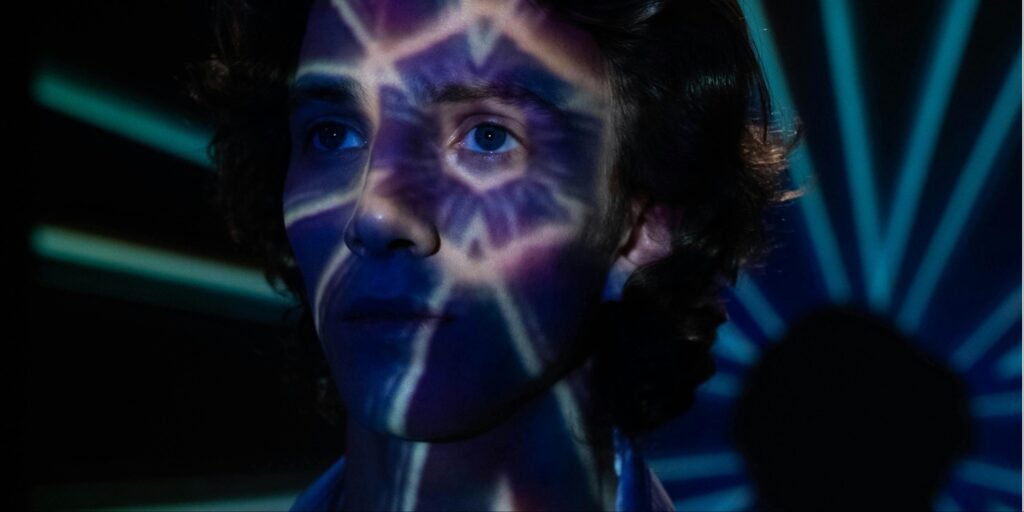Krautrock: A Beginner’s Guide to the Movement That Redefined German Music

Genesis in the Rubble: The Rise of Krautrock
Krautrock emerged in West Germany during the late 1960s and early 1970s as a groundbreaking cultural movement, driven by a new generation of artists seeking to redefine German identity in the shadow of a tumultuous history. In the aftermath of World War II, the nation faced physical and psychological devastation, and these artists yearned to break free from the weight of tradition and the lingering influences of the past. Their work reflected a desire for reinvention, a bold step towards forging a distinct cultural voice that resonated with a modern, forward-thinking ethos.
This search for a new cultural identity was also a reaction to the perceived homogenisation and Americanisation of mainstream music in Germany. Dissatisfied with the dominance of Anglo-American pop and rock, Krautrock pioneers prioritized artistic freedom over commercial considerations. They sought to challenge conventions and the formulaic nature of commercial music by experimenting with sound and expressing their unique creative visions, becoming a fertile ground for innovation and artistic exploration.
From the very beginning, the movement embraced a broad spectrum of influences, including rock, jazz, electronic experimentation, avant-garde classical music, folk traditions and even spiritual or mystical themes. Unlike other genres that adhered to specific stylistic parameters, Krautrock was defined by its eclecticism and unpredictability. This openness to sonic experimentation made it a dynamic and transformative force in modern music, with bands like Can, Neu!, Faust and Amon Düül II crafting works that pushed the boundaries of what music could be.
At the same time, Krautrock’s rise coincided with West Germany’s Wirtschaftswunder (economic miracle), marked by rapid industrial growth and international success stories such as Volkswagen, BASF and Bayer. While this prosperity fostered a climate of optimism and modernity, it also created a highly organized and, at times, restrictive society. This duality is reflected in the music of groups like Kraftwerk, whose robotic, minimalist aesthetic critiqued the mechanization and regimentation of postwar German life.
The Kosmische Kosmos: Key Bands and Defining Sounds
The term Krautrock, coined by British music journalists in the early 1970s, has long been contentious among both artists and fans. While it serves as a convenient shorthand for this revolutionary German musical movement, many aficionados prefer the term Kosmische Musik. Coined within the movement itself, Kosmische Musik more accurately reflects the artistic intent, spiritual ethos and philosophical depth that defined this pioneering era of sound exploration.
Though the genre exhibits some shared traits, such as a penchant for repetition, experimental structures, and the integration of electronic instruments, each band contributed its own distinct approach and identity. For instance, Can, one of the movement’s most influential groups, crafted a sound rooted in hypnotic grooves, extensive improvisation, and rhythms that constantly evolved in unpredictable directions. Neu! pioneered the iconic motorik beat—a propulsive, steady rhythm often described as the “heartbeat” of Krautrock—that became a defining hallmark of the genre.
In contrast to these bands’ more guitar-driven approach, Kraftwerk’s minimalist and technology-driven aesthetic veered toward proto-electronic music, exploring themes of modernity, automation, and urban life. Their streamlined, robotic sound anticipated the rise of electronic music as a dominant cultural force. Meanwhile, Tangerine Dream delved into synthesizer-based soundscapes, creating immersive, atmospheric compositions that evoked a cosmic sense of wonder, laying the groundwork for ambient and new-age music.
The Krautrock movement also embraced a spirit of radical experimentation, with a roster of boundary-pushing outsiders. Faust, for example, gained renown for their industrial Dadaism, blending musique concrète, mechanical noises, and anarchic performance art into their unpredictable, often chaotic music. Their avant-garde ethos starkly contrasted with the ethereal compositions of Popol Vuh, whose acoustic and electronic instrumentation created lush, transcendent soundscapes. Popol Vuh’s emotionally resonant music was immortalized in several of Werner Herzog’s films, where it amplified the cinematic exploration of nature, spirituality and human resilience.

Krautrock’s Echo: A Legacy of Experimentation
Krautrock’s influence transcended Germany’s borders, shaping the evolution of numerous artists and genres worldwide. Its experimental ethos and innovative approaches resonated with musicians seeking to break free from conventional structures, making Krautrock a key driver of musical innovation. Notably, it played a pivotal role in the emergence of post-punk in the late 1970s and early 1980s, a genre that reacted against the raw simplicity of punk rock with more nuanced, experimental sounds.
The minimalist, repetitive rhythms of bands like Neu! and Can deeply influenced post-punk icons such as Joy Division, Gang of Four, and Public Image Ltd., whose music echoed the motorik beat and avant-garde sensibilities of their German predecessors. Beyond post-punk, Krautrock’s reach extended to luminaries like Brian Eno, who collaborated with Cluster and Harmonia, and David Bowie, whose “Berlin Trilogy” albums drew heavily from the Berlin music scene’s sonic experimentation. Its legacy also shaped alternative and indie acts like Sonic Youth and Stereolab, who incorporated Krautrock’s hypnotic grooves and avant-garde textures into their music.
Krautrock’s pioneering use of electronics also left an indelible mark on electronic music genres such as techno, house, ambient, and electronica. Kraftwerk, in particular, became one of the most influential electronic music groups in history, using synthesizers to explore themes of technology, automation, and modernity. Their groundbreaking work laid the foundation for the rise of electronic music as a dominant cultural force.
In recent years, Krautrock has experienced a resurgence, captivating new generations of listeners. This revival has seen bands like Guru Guru and Faust reform, perform at festivals, and release new music, introducing their groundbreaking sounds to wider audiences. The reissue of classic albums by labels like Garden of Delights, Spalax, and Captain Trip has further contributed to Krautrock’s accessibility and appreciation, ensuring that its legacy as a wellspring of creativity and innovation endures.
Listen to our carefully curated playlist, celebrating Krautrock, some of its greatest interpreter and enduring legacy, via the player below.